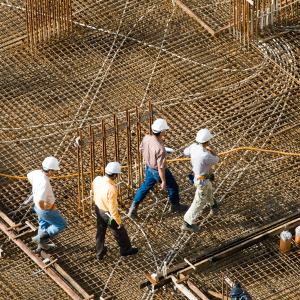Swimming Pool Regulations...
Swimming Pools includes any structure intended for swimming, recreational bathing or wading that contains water over 24 inches deep. This includes in-ground, above ground and on-ground pools; hot tubs; spas and fixed-in-place wading pools.
All residential swimming pools must comply with the following safety barrier rules unless said pools include a power safety cover complying with ASTM F 1346:
- Barrier Height and Clearances – The top of the barrier shall be at least 48 inches above grade measured on the side of the barrier that faces away from the swimming pool. The maximum vertical clearance between grade and the bottom of the barrier shall be 2 inches measured on the side of the barrier that faces away from the swimming pool. Where the top of the pool structure is above grade, the barrier is authorized to be at ground level or mounted on top of the pool structure, the maximum vertical clearance between the top of the pool structure and the bottom of the barrier shall be 4 inches.
- Openings – Openings in the barrier shall not allow passage of a 4-inch diameter sphere.
- Solid Barrier Surfaces – Solid barriers which do not have openings shall not contain indentations or protrusions except for normal construction tolerances and tooled masonry joints.
- Closely Spaced Horizontal Members – Where the barrier is composed of horizontal and vertical members and the distance between the tops of the horizontal members is less than 45 inches, the horizontal members shall be located on the swimming pool side of the fence. Spacing between vertical members shall not exceed 1.75 inches in width. Where there are decorative cutouts within vertical members, spacing within the cutouts shall not exceed 1.75 inches in width.
- Widely Spaced Horizontal Members - Where the barrier is composed of horizontal and vertical members and the distance between the tops of the horizontal members is 45 inches or more, spacing between vertical members shall not exceed 4 inches. Where there are decorative cutouts within vertical members, spacing within the cutouts shall not exceed 1.75 inches in width.
- Chain Link Dimensions – Maximum mesh size for chain link fences shall be a 2.25 inch square unless the fence in provided with slats fastened at the top or the bottom which reduce the openings to no more than 1.75 inches.
- Diagonal Members – Where the barrier is composed of diagonal members, the maximum opening formed by the diagonal members shall be no more than 1.75 inches.
- Gates – Access gates shall be equipped to accommodate a locking device. Pedestrian access gates shall open outward away from the pool and shall be self-closing and have a self-latching device. Gates other than pedestrian access gates shall have a self-latching device. Where the release mechanism of the self-latching device is located less than 54 inches from the bottom of the gate, the release mechanism shall be located on the pool side of the gate at least 3 inches below the top of the gate, and the gate and barrier shall have no opening greater than 0.5 inch within 18 inches of the release mechanism.
Dwelling Unit Wall As A Barrier - Where a wall of a dwelling serves as part of the barrier, one of the following shall apply:
- Doors with direct access to the pool through that wall shall be equipped with an alarm which produces an audible warning when the door and its screen are opened. The alarm shall sound continuously for a minimum of 30 seconds immediately after the door is opened and be capable of being heard throughout the house during normal household activities. The alarm shall automatically reset under all conditions. The alarm shall be equipped with a manual means to temporarily deactivate the alarm for a single opening. Such deactivation shall last no more than 15 seconds. The deactivation switch shall be located at least 54 inches above the threshold of the door.
- The pool shall be equipped with a power safety cover which complies with ASTM F 1346.
- Other means of protection, such as self-closing doors with self-latching devices, which are approved by the administrative authority shall be accepted so long as the degree of protection afforded is not less than the protection afforded items 1 or 2 in this Section.
Pool Structure As Barrier – Where an above ground pool structure is used as a barrier or where the barrier is mounted on top of the pool structure, and the means of access is a ladder or steps, then the ladder or steps either shall be capable of being secured locked or removed to prevent access, or the ladder or steps shall be surrounded by a barrier which meets the requirements for barriers as delineated in the barrier specifications above. When the ladder or steps are secured, locked, or removed, any opening created shall not allow the passage of a 4-inch diameter sphere.
Prohibited Locations – Barriers shall be located so as to prohibit permanent structures, equipment or similar objects from being used to climb the barriers.
